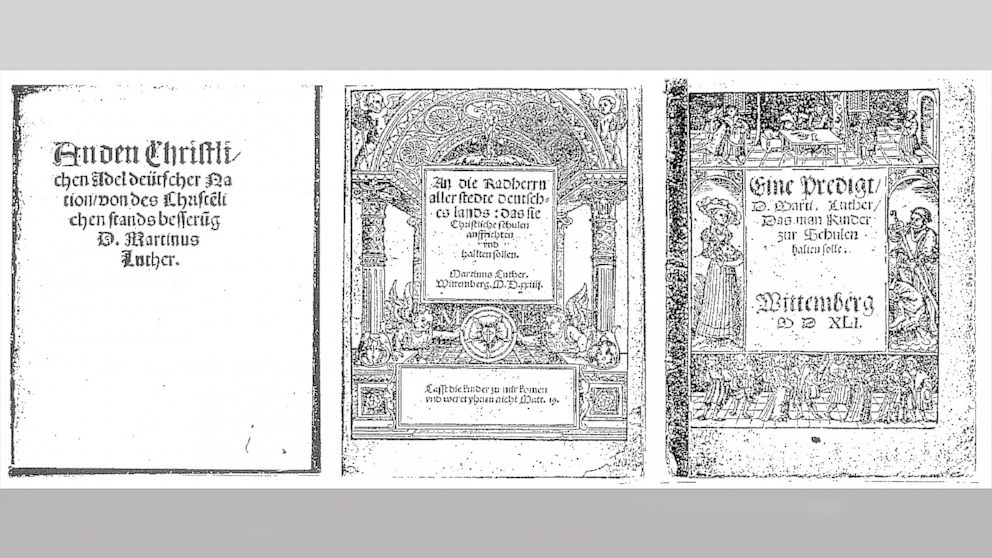'Irreplaceable Loss': Luther Pamphlets Swiped from Museum
Historians say the theft of the leaflets are worth about 60,000 euros.

July 21, 2013— -- Three elaborately printed pamphlets containing writings by church reformer Martin Luther have been stolen from a small museum in Eisenach. Historians say the theft of the leaflets, worth about 60,000 euros, is a blow to Europe's cultural memory.
Church authorities and historians in Germany have reacted with shock to the news that three original printed pamphlets containing writings by Martin Luther were stolen from a museum in Eisenach, Germany, last week.
A member of staff at the Lutherhaus museum in Eisenach noticed that the 16th-century papers were missing from a glass case at 2 p.m. last Friday afternoon.
Even though the pamphlets are printed, they are unique because they contain hand-written notes by contemporaries of Luther.
"Someone removed the fastening that kept the glass case shut. It wasn't a very strong lock and it can't be ruled out that this was a crime of opportunity," the director of the museum, Jochen Birkenmeier, told SPIEGEL ONLINE.
"This is an irreplaceable cultural asset. You can't simply purchase such items on the art market and it's a special loss for us because of the handwritten entries on the pamphlets. Those entries are now no longer available to researchers."
The museum is located in a half-timbered building where the church reformer is believed to have lived from 1498 to 1501 while he attended a local school.
Stephanie Jacobs, the director of the book museum at the German National Library, told FOCUS Online: "The theft of such writings is a major loss for Germany's cultural memory. It could do lasting damage to European culture because it deprives researchers of important historical records."
The pamphlets were printed in large quantities but many didn't survive the passage of time and the remaining ones are in museum collections. "You can't buy them in the open market," said Birkenmeier.
'No Serious Dealer'
Police have contacted the supervisors of two school groups who were visiting the museum at the time the writings are believed to have been stolen.
The missing pamphlets are "To the Christian aristocracy of German nationhood," dated 1520, "To the councillors of all towns," from 1524, and one called "Luther sermon to be held to children in schools," from 1530.
The pamphlets are believed to be worth €60,000 ($79,000), but it may be difficiult for the thief to find a buyer for them. "A serious dealer wouldn't accept something like this. He would always ask where they came from, and they're easily identifiable if they turn up anywhere, because of the handwriting on them," Birkenmeier said. "There may be a black market somewhere for manic private book collectors who may want to have something like this in their private collection or try to move them abroad."
The museum has no surveillance cameras. It is about to undergo a €3.4 million modernization and expansion in time for the 500th anniversary of the 1517 posting of Luther's 95 Theses, which triggered the Protestant Reformation.
"The annoying thing is that we were about to start a complete refurbishment in a few weeks with a much better security concept, surveillance cameras and glass cases fitted with alarms," said Birkenmeier.
The museum has been closed for two days to allow museum staff to add better locks to the cases and to replace some of the original documents on display with replicas.cro




